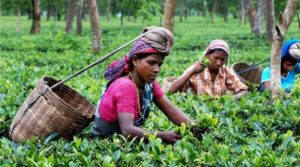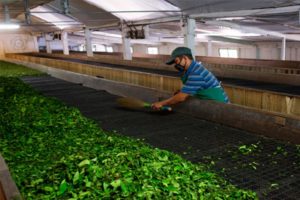Barak UpdatesBusinessBreaking News
Tea Industry: A Planter’s Perspective- Part VI- ‘Tea Industry – Likely Solutions’

Tea Industry – Likely Solutions
December 6: Solution to the industry’s woes is not very difficult to find, but only if the Government, both State & Central, is willing to sit with the industry with an open mind. Basically, one has to understand that Tea is an agricultural produce subject to vagaries of nature. We all talk of quality and non-quality teas, but one has to understand that from March through December, the weather including temperatures fluctuates drastically thereby affecting the soil system. This affects the bushes ultimately to produce the kind of leaf they throw up.
 Each flush is way different from the other. The tea estates produce 4 different types of teas in a year from the same bush whether CTC or Orthodox or any other. Price for each of the 4 types is different but the general perception in the market is that of comparison with the other. The need of the times is to produce acceptable teas for the market which of course has become very cost sensitive in these hard times the economy is facing. Every paisa counts – as they say, although paisa as a term has no relevance today.
Each flush is way different from the other. The tea estates produce 4 different types of teas in a year from the same bush whether CTC or Orthodox or any other. Price for each of the 4 types is different but the general perception in the market is that of comparison with the other. The need of the times is to produce acceptable teas for the market which of course has become very cost sensitive in these hard times the economy is facing. Every paisa counts – as they say, although paisa as a term has no relevance today.
 Tea prices loomed around Rs 45/55 of Cachar in 2002/2003. Today with so much increase in wages, salaries, administration cost, chemicals, manure, petroleum products, coal and other inputs the sale price has not kept pace. We see on pretext of quality & non quality price of the produce ranges between Rs 170 to Rs 85 per kg. Do we ever see prices of packaged small packs fluctuating so much…..?
Tea prices loomed around Rs 45/55 of Cachar in 2002/2003. Today with so much increase in wages, salaries, administration cost, chemicals, manure, petroleum products, coal and other inputs the sale price has not kept pace. We see on pretext of quality & non quality price of the produce ranges between Rs 170 to Rs 85 per kg. Do we ever see prices of packaged small packs fluctuating so much…..?
 To make tea industry sustainable, the Governments should fix a minimum floor price of tea below which tea should not be sold what come may….The big picketers such as HUL, Tata Tea, Wagh Bakri and a host of others control the market be it auction or through private treaty with cash strapped producers or BLF’s. When is this going to change…..are we waiting for some miracle to happen….not likely to happen!!! I feel the only answer to this is MSP.
To make tea industry sustainable, the Governments should fix a minimum floor price of tea below which tea should not be sold what come may….The big picketers such as HUL, Tata Tea, Wagh Bakri and a host of others control the market be it auction or through private treaty with cash strapped producers or BLF’s. When is this going to change…..are we waiting for some miracle to happen….not likely to happen!!! I feel the only answer to this is MSP.
 The old & irrelevant P L Act needs a thorough change or scrapping it altogether and replacing it with a new well conversed one. Many issues will be solved on their own. We will see less of inspectors visiting the gardens.
The old & irrelevant P L Act needs a thorough change or scrapping it altogether and replacing it with a new well conversed one. Many issues will be solved on their own. We will see less of inspectors visiting the gardens.

The Government itself supplies ration at Rs 3/- to the workers in the garden area but expects the owners to buy the same from the market at Rs 24/26 per kg and supply at 54 paise. Is this justified? These prices were finalized way back in 1950’s. Since then everything has changed, even Gandhiji’s salt is not less than Rs 2/- a kg and goes upto Rs 20 per kg with cost of colorful packaging, advertisements on media and added with Iodine.
 The Government’s Fertiliser Companies are no more fulfilling their social obligations towards farmers. The Tea community is no less than a farmer. Why then they dance to the tune of several unscrupulous traders to keep supplies short in supply so that the industry does not get the manure at the MRP announced every kharif season. The Government should ensure depots at strategic places so that manure could be stored and sold from such outlets.
The Government’s Fertiliser Companies are no more fulfilling their social obligations towards farmers. The Tea community is no less than a farmer. Why then they dance to the tune of several unscrupulous traders to keep supplies short in supply so that the industry does not get the manure at the MRP announced every kharif season. The Government should ensure depots at strategic places so that manure could be stored and sold from such outlets.
 Cost of tea in Vietnam, Sri Lanka, Kenya and other African countries is low for the very simple reason that there is hardly any social cost to bear there. Remove all this, and one can see a sea change in the Indian Tea Industry.
Cost of tea in Vietnam, Sri Lanka, Kenya and other African countries is low for the very simple reason that there is hardly any social cost to bear there. Remove all this, and one can see a sea change in the Indian Tea Industry.
On a concluding note, Anil Goenka, a renowned and experienced planter said, “All ills the industry faces are man-made. Why don’t we all come together to make the authorities understand. We really do not have much time on hand now. The sooner it is done, the better.”

Also Read: Tea Industry: A Planter’s Perspective- Part V- ‘Tea Estates – Expressionless!’
Concluded…..




